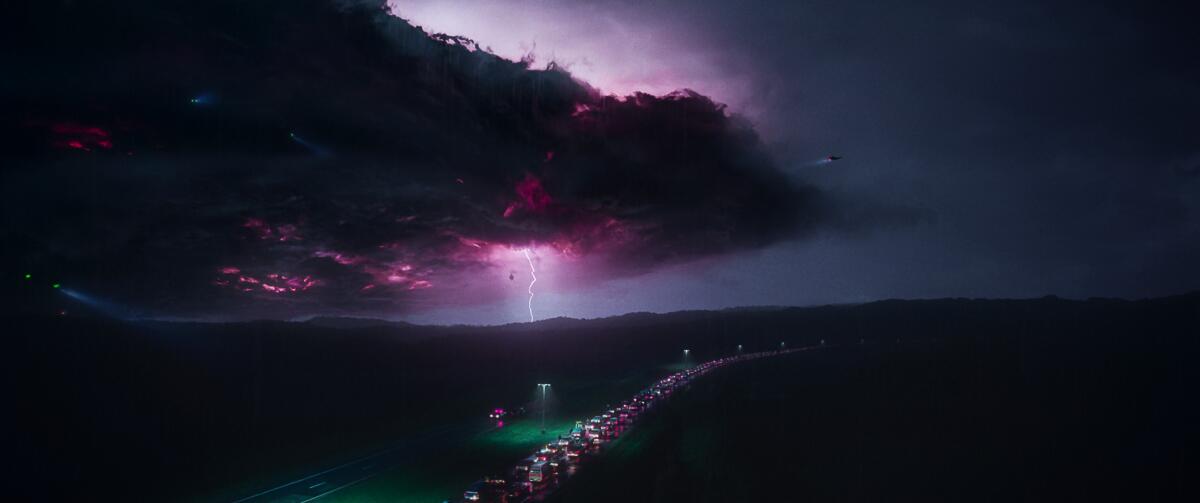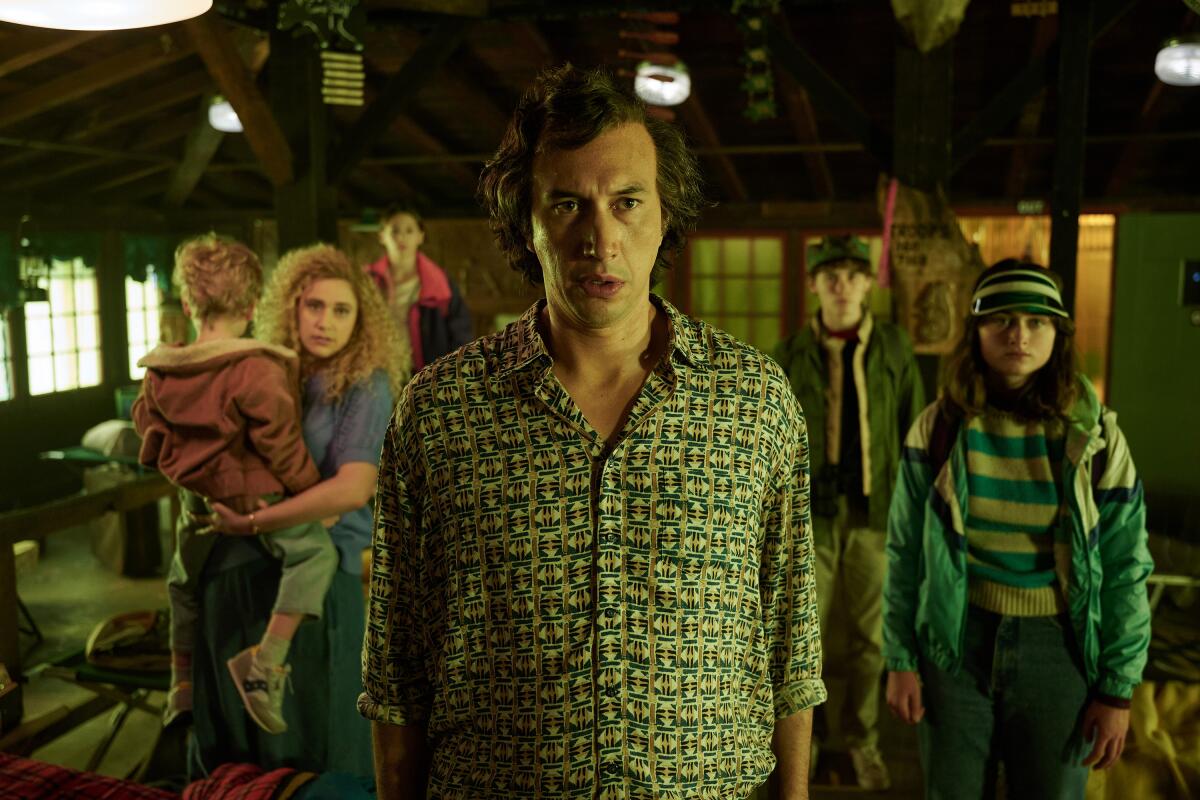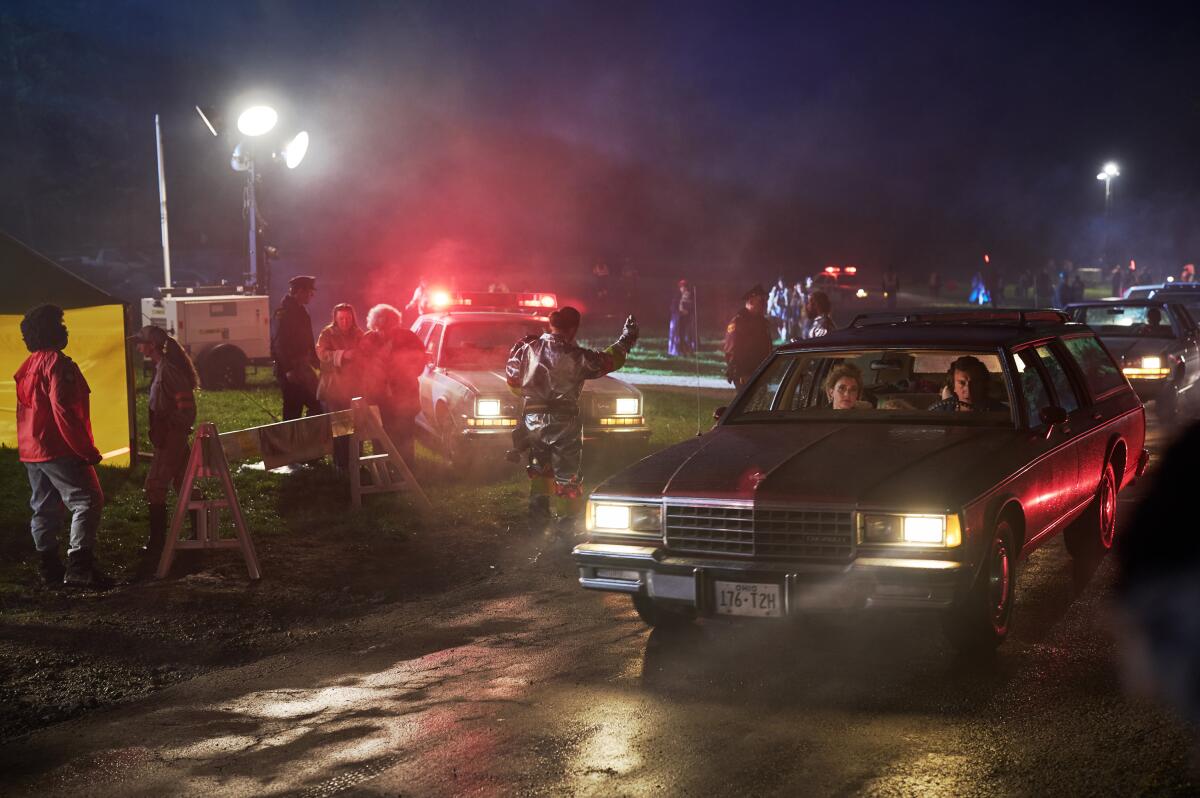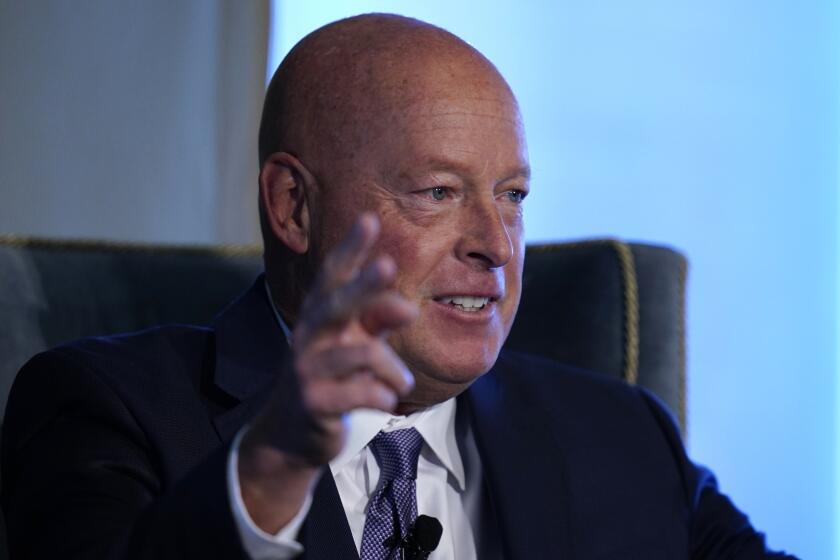How a director known for drama made ‘White Noise,’ the strangest disaster movie of the year

If you were looking for a director to stage a spectacular cataclysm onscreen, Noah Baumbach would probably not be on your short list.
Baumbach’s sharply observed, often personal movies, including 2005’s “The Squid and the Whale,” 2014’s “While We’re Young” and 2019’s best picture-nominated “Marriage Story,” have featured plenty of relationship disasters and emotional blow-ups. But there have been no actual explosions, no big car crashes, no visual effects.
“We had to deal with blood a little bit in ‘Marriage Story,’” Baumbach says dryly, referring to a scene in which Adam Driver’s character accidentally cuts himself while attempting to perform a knife trick. “But that’s about it.”
So when Baumbach was preparing to adapt author Don DeLillo’s seminal 1985 post-modern novel “White Noise,” he knew one of the biggest challenges would be filming the book’s dramatic centerpiece: a mysterious “airborne toxic event” that descends upon a small college town, forcing its residents — including the brainy, neurotic Gladney family — to evacuate in terror.
A dozen films into his directing career, Baumbach felt ready to tackle something on a bigger scale. “There was a different kind of planning, just finding the right people to help, but it was exciting,” he says.
To be clear, “White Noise” is not, by any stretch of the imagination, a typical Hollywood disaster movie. Like the novel from which it is faithfully adapted, the movie, which hits select theaters Friday before arriving on Netflix on Dec. 30, is a satire of the many ways Americans try to distract themselves from their own fear of mortality, throwing themselves into consumerism, entertainment, conspiracy theories and pharmaceuticals. Mashing up quirky comedy with elements of sci-fi, horror and noir, all of it shot through with heady ideas, the film is all but impossible to categorize.
“It is sort of a meditation on death wrapped in a love letter to the ’80s and sometimes a screwball comedy,” Don Cheadle, who co-stars alongside Driver and Greta Gerwig, offers by way of description. (You know, one of those.)

For years, DeLillo’s novel was considered un-filmable. The book takes place in a world that feels shifted off a few degrees from our own. Its characters — including the Hitler studies professor Jack Gladney (Driver), his wife Babette (Gerwig) and their precocious children — speak in deadpan aphorisms that, while often funny, are difficult to translate into real life. It is dense with big ideas, but as a narrative, it’s oddly structured and episodic.
But Baumbach — who has loved the book since first reading it as a teenager on the advice of his writer father — was undeterred by the trickiness of the material.
“I was really interested in adapting the tone and the particular strangeness of the book, which is also very familiar,” says Baumbach, who has earned two Oscar nominations for original screenplay but had never before adapted someone else’s work. “There are many movies that have these unreal tones to them, where you’re like, ‘This is totally not what I expected but also feels very much how the world feels to me.’ There are filmmakers like David Lynch who have made whole careers out of that.”
One of the novel’s most famous sequences is an airborne toxic event that is unleashed when a train carrying noxious chemicals is derailed in an accident. (The rock band Airborne Toxic Event, founded in 2006, took its name from this section of DeLillo’s novel.) As the vaguely menacing cloud drifts toward the unnamed town, the Gladneys and others flee, gripped by varying degrees of panic, even as they are unsure what they are fleeing from.
In approaching DeLillo’s novel, the airborne toxic event represented to Baumbach both one of its most inherently cinematic elements and one of its most potent metaphors. In its undefined threat, one can read the inescapable specter of death or the planet’s looming environmental catastrophe or the dangers of unchecked technology or our collective penchant for paranoid conspiracy theories.

Shooting the film in Ohio during the Delta surge of the COVID-19 pandemic, the airborne toxic event took on a whole new meaning for Baumbach and his cast and crew. The juxtaposition of a fictional airborne threat with a real airborne disease, each freighted with uncertainty and fear, made for a uniquely DeLillo-esque sense of absurdity.
“During those evacuation scenes, you would hear the AD say, ‘OK, now, everybody take off your masks and put on the period masks,’” says Baumbach. “You didn’t feel the remove from the craziness we were all experiencing.”
“It was one of those things that was kind of self-evident,” says Cheadle, who plays Jack Gladney’s friend and fellow professor, Murray, who studies Elvis. “We’re walking around with masks on and everybody’s got hand sanitizer. Everybody knew people who were getting sick. The relationship between the subject matter and what we were going through — the existential dread that everyone was feeling at different levels — was not lost on us.”
Visually, the disaster, combined with the movie’s ’80s period setting, offered Baumbach an opportunity to pay tribute to some of the blockbusters of that earlier era.
Director Noah Baumbach knew that Elfman had many sides to him -- the wild rock ‘n’ roller, the gothic musician and the emotional composer. Baumbach wanted them all.
In the Gladneys’ harried escape from the cloud in their station wagon, Baumbach saw echoes of the Griswold family’s comic travails on the road to Wally World in “National Lampoon’s Vacation.” Shots of crowds looking up at the sky in awe and fear evoked Steven Spielberg films like “Close Encounters of the Third Kind.”
In the novel, DeLillo offers little description of the toxic cloud itself. “We all had ideas about what it might look like,” says cinematographer Lol Crawley. “You can look at the end of ‘Ghostbusters,’ for example, where people are looking up at the building, and see a very similar kind of aesthetic. It was a matter of finding a balance where it didn’t look hokey, given that it’s referencing these things from 40 years ago, but still paid homage in some way to those movies.”
To achieve the look of the toxic event, Baumbach wanted to keep the visual effects as old-school as possible. In the end, the cloud was created with a combination of matte paintings and the kind of cloud tank work that has been used for decades to achieve various atmospheric effects.
“I wanted the effects to feel aesthetically of the time,” Baumbach says. “Essentially how I would have gone about it back then is how we went about it now. To me, that felt more beautiful and more appropriate than doing something that was entirely digital.”

In that same spirit, rather than relying on digital effects, production designer Jess Gonchor and his team corralled scores of period ’80s vehicles to make up the convoy of cars jamming the road out of town — a massive logistical challenge that required closing down a section of highway for months on end.
“I think at one point we had a couple of hundred cars — it was incredible that we were able to obtain that many,” says Gonchor. “Police cars, ambulances, Winnebagos, school buses. It was a major undertaking to get all the cars together and be able to line them up and actually have them moving. I’ve never seen anything like it.”
In the end, Baumbach leaves it to the audience to decide exactly how to interpret the airborne toxic event. But in its sense of looming, ill-defined peril, he sees a metaphor every bit as ripe with meaning in 2022 as it was in 1985, if not more so.
“The book allows for so much interpretation, and I didn’t want to narrow these things,” he says. “We create this sort of dance for ourselves daily to not acknowledge our mortality, and at the same time, we’re putting all these images of death in our entertainment and following horrible stories with a kind of delight because it’s happening somewhere else or it feels unreal to us. And the airborne toxic event is essentially bringing all that death and horror to our doorstep.”
But, you know, in a funny way.
Disney’s board gave Bob Chapek a three-year contract extension in June. Five months later, the board replaced him with predecessor Bob Iger. What happened?
More to Read
Only good movies
Get the Indie Focus newsletter, Mark Olsen's weekly guide to the world of cinema.
You may occasionally receive promotional content from the Los Angeles Times.













